News Archive
Images of the launch
These are a few images of BETTII's launch taken from one of the webcameras of the balloon base.

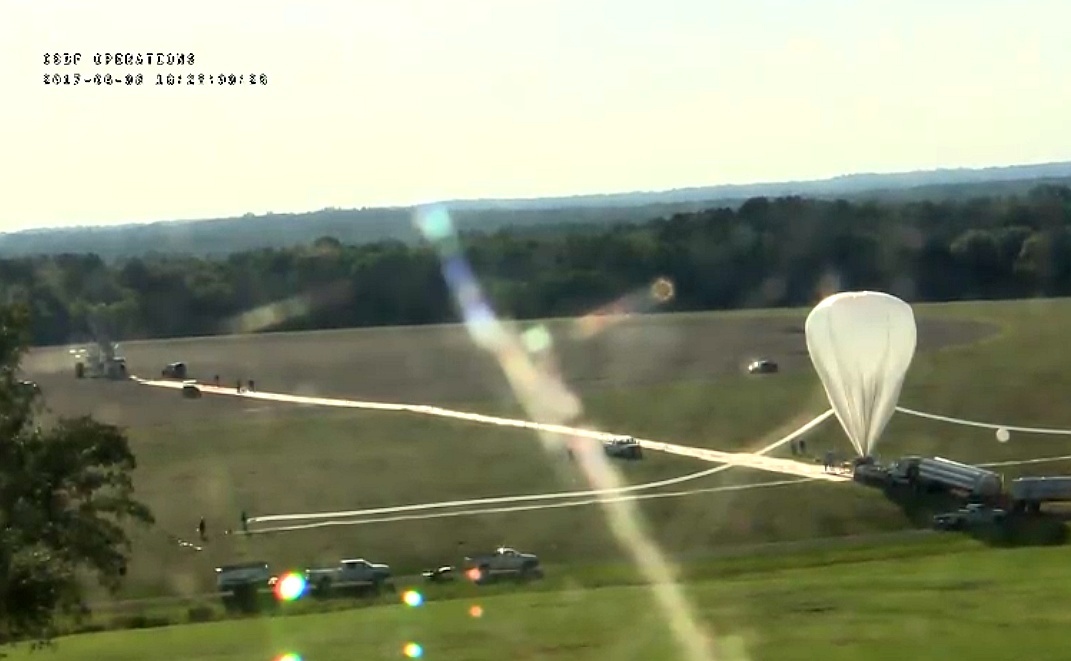
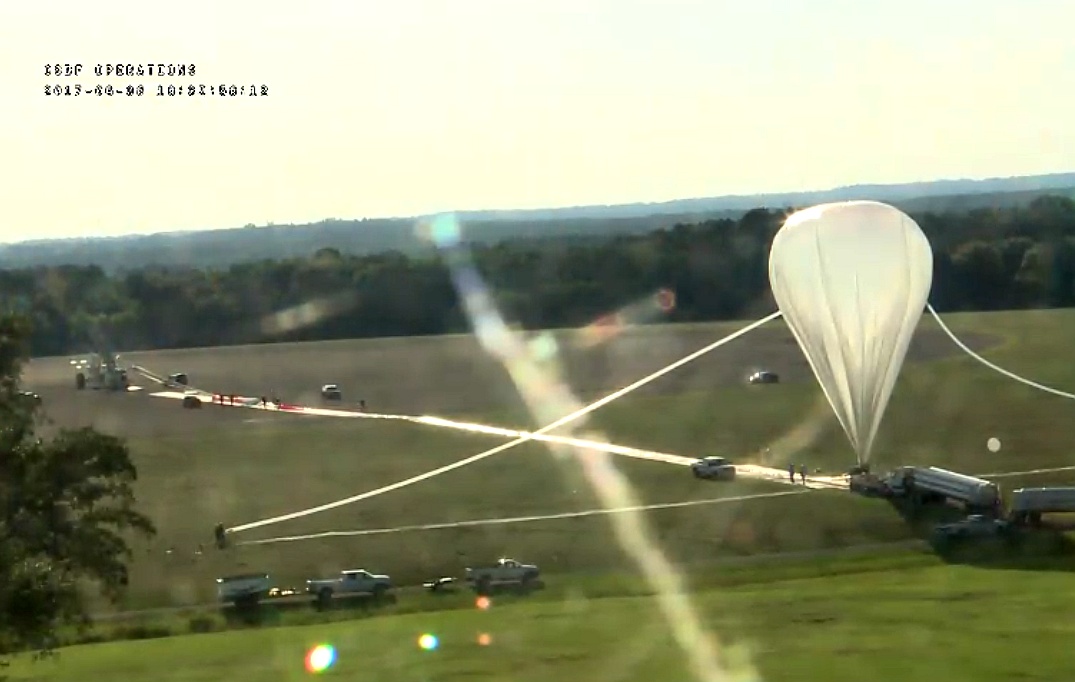
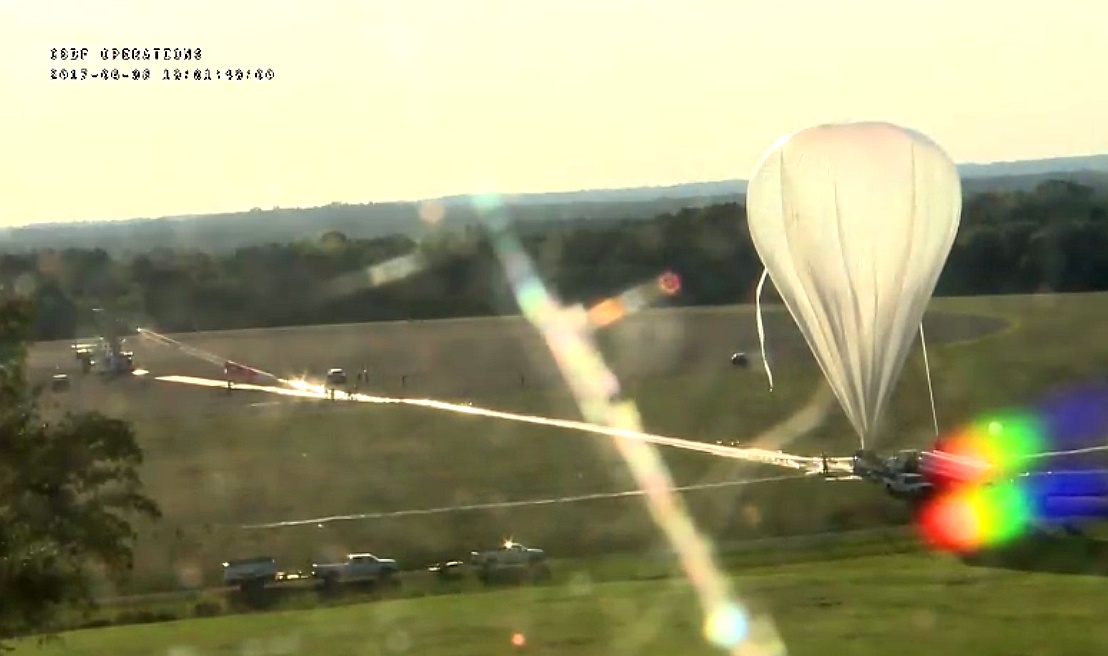

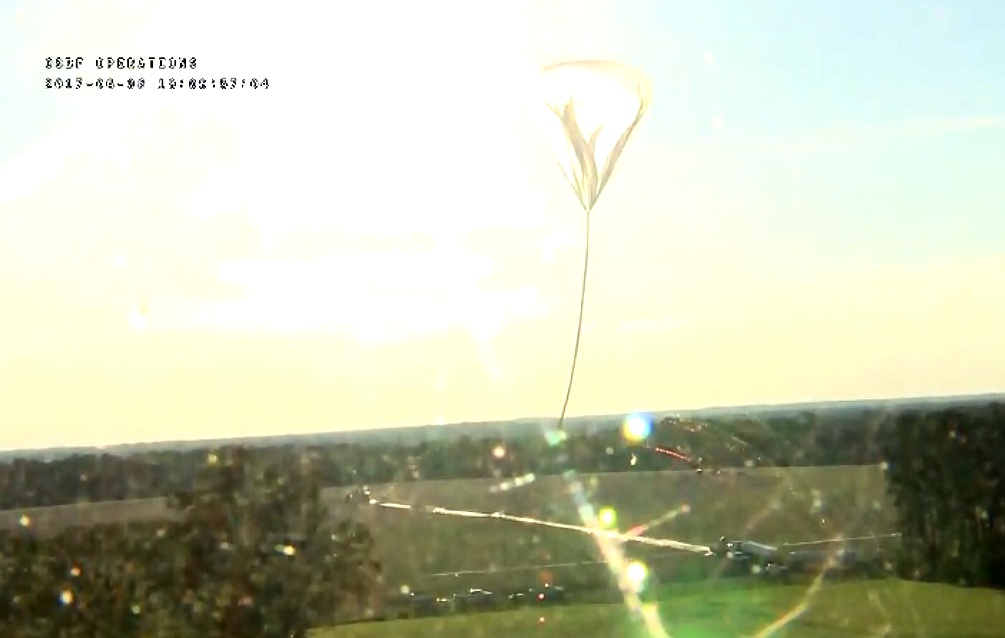
-
June 24 2017
BETTII twin interferometer destroyed in free fall incident over Texas
Palestine, Texas.- The first balloon mission of the NASA summer balloon launch campaign being carried out from the Columbia Scientific Balloon Facility (CSBF), located in the outskirts of the city of Palestine, Texas, ended in the worst way.
Accordingly to an entry published a few hours after the incident by the BETTII Twin Interferometer on its facebook page and later confirmed by NASA on its website, at the end of the flight, the payload was separated from the balloon following the standard procedure, when due to yet unknown reasons, the instrument detached from the parachute and free fell from an altitude of 135.000 feet, impacting the ground a few minutes later in west Texas.
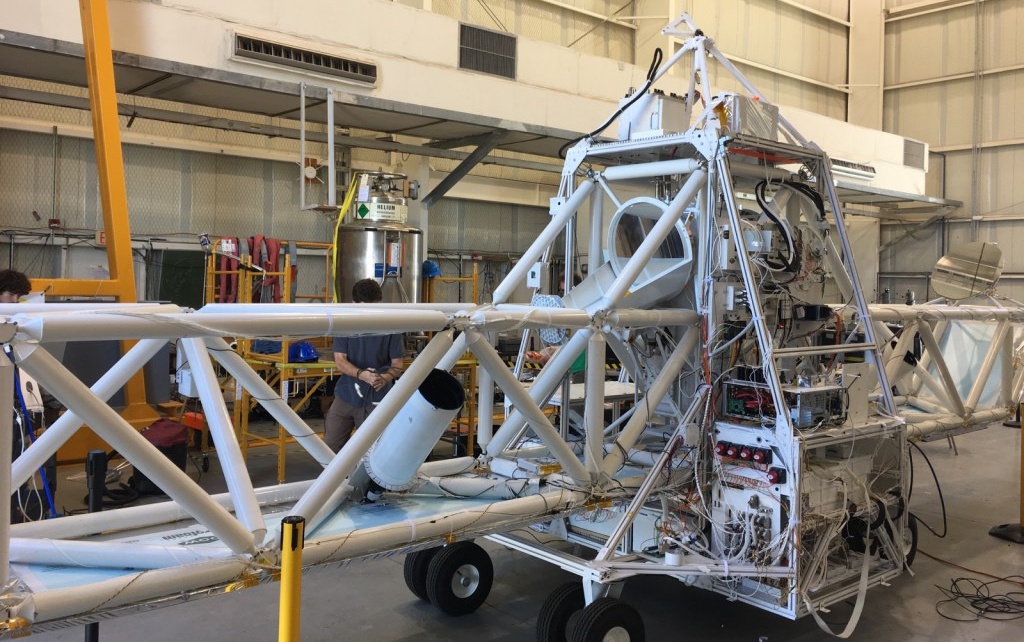
In case you missed my last entry, BETTII stands for Balloon Experimental Twin Telescope for Infrared Interferometry and as its name indicates is a balloon-borne interferometer composed by two mirrors (collectors) located 8 meters apart in the extremes of a tubular structure. These mirrors reflect the incident IR radiation into a cryogenically cooled instrument able to detect faint IR signals from space. Actually, the development of astronomical interferometers is a very promisory field of investigation in which BETTII is a pathfinder for a future orbital observatory applying this technique.
Chronology of the flight
The BETTII team arrived at Palestine, on May 8th starting the reassembling of the instrument at once. By May 24 they finished the integration work and a week later their passed the compatibility test. On the first days of June, they were declared "flight ready" and were merely waiting for good weather to launch.
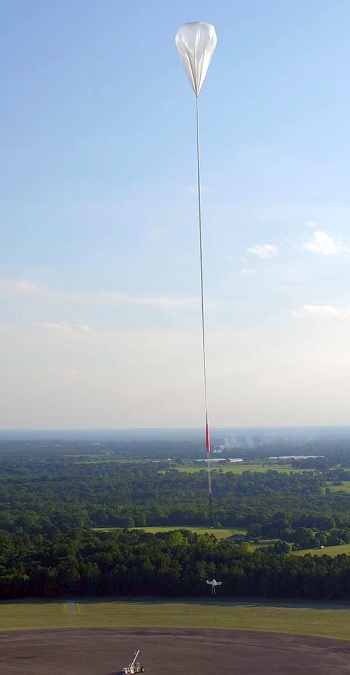
After a first cancelled attempt on June 5th, weather improved, winds eased, and a perfect opportunity arrived on June 8th.
That afternoon, the Big Bill launch vehicle (the same used in the NASA balloon launch base, in Fort Sumner, New Mexico which is transported to Palestine and back every year) took BETTII to the circular launch pad, where CSBF staff started to rigg the parachute and flight train. A few minutes later, the balloon -with a volume of 39.000.000 cubic feet- was extracted from the box, laid over the grass surrounding the launch area, and inflation started.
The operation was completed 40 minutes later. At 00:09 utc on June 9, the balloon was released and two minutes later, it took BETTII which was detached from the launch vehicle and become airborne. A few tense seconds followed when the team realized that the restrain collar (used to prevent the unfolding part of the balloon being caught by the wind and sail) was still attached to the bottom part of the bubble, but soon were relieved seeing it to fall to the launch pad a minute later.
The balloon ascended at a slow pace and moved in a southeast path until reaching float altitude around 120.000 feet. Once there, the prevailing winds took the balloon and its payload in a westward course which would be maintained during the rest of the flight, as we can see in the map below.
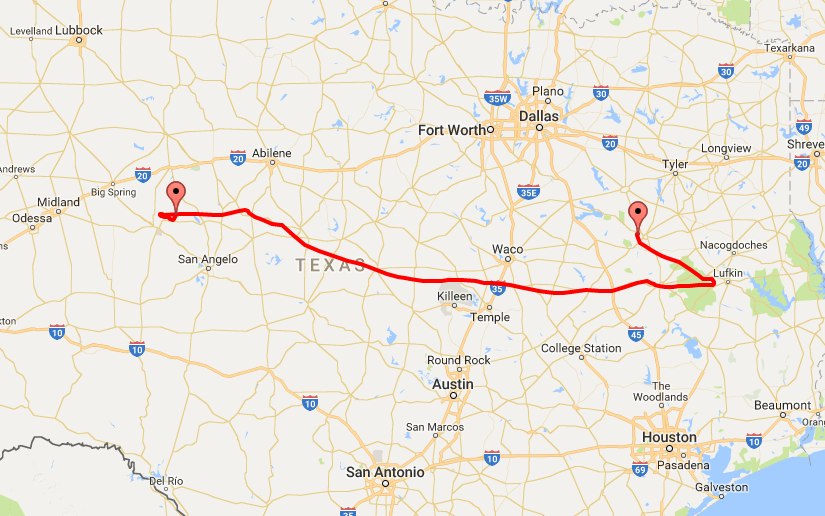
The incident
The mission (nomenclated as 1598P) progressed overnight without problems. The scientific team whom was monitoring the performance of the instrument identified some problems, but nothing you can not expect from an engineering flight of a novel experiment. By daybreak, the balloon reached the Concho Valley area north of San Angelo, which is the habitual landing zone of almost any mission performed from Palestine in the last years. Having lost telemetry link due to the distance, the mission was near to be finished.
I was following the flight, via the CSBF log file and checked that at 13:23 utc occured the typical sudden drop of altitude of the payload, which is the indication of the termination of the flight. I never imagined how sudden it was, until the next day on which I've read the statement published by BETTII's team on his Facebook page:
Yesterday morning, the BETTII flight completed and the payload was released from the balloon. Unfortunately, when the parachute deployed, and anomaly occurred and the payload separated from the parachute. BETTII then fell approximately 135,000 feet to the ground. There is an investigation under way, and it's too soon to know exactly what happened and why. We have not yet gotten eyes on the payload, as it landed in a rugged area, but it seems highly likely that the entire payload is destroyed.
.
Obviously, this is extremely disappointing to all of the team, but as the investigation proceeds, we'll start working on a new version of BETTII that will be better.
Thanks to all of you for your support and good wishesA few hours later, official word from NASA was published. I'm including here only the relevant parts:
At the conclusion of the mission Friday, June 9, NASA conducted an analysis of atmospheric conditions and a survey of the operational area as part of a safety analysis in preparation for flight termination. Once the balloon reached a safe flight termination area, characterized by sparse population but still relatively accessible via roads, flight controllers at CSBF sent flight termination commands to separate the parachute/payload from the balloon.
.
After the commands were sent, the connection between the payload gondola and parachute failed. The payload separated from the parachute and free fell to the ground in a remote, wooded area northeast of Sterling City, Texas, resulting in the loss of the payload.
(...)
Crews have recovered the balloon and parachute; recovery of the payload is expected to occur over the next several days given the remote location of the site.
NASA has formed a team to investigate the cause of the incident. Two more flights are planned in this year's Palestine, Texas, scientific balloon campaign, but on-hold pending a full engineering review of the payload/gondola connections to the parachute system. Each payload/gondola is unique; the upcoming flights use payload/gondola connections different than that used for the BETTII flight.Until that moment, the information on the incident was only being discussed on Stratocat's Twitter account and also had a few more mentions on Facebook. However, after the NASA publication, the news portal San Angelo Live published a note on the incident with the title: "NASA Balloon Mishap Dumps Payload from 135,000 ft Near Sterling City".
Luckily, what could have been a nightmare of media reaction for the agency if the news had leaked to the major networks finally resulted in less exposure than expected and had no other echoes outside the publication in the San Angelo portal.
Similar cases
Doing some research on recent history we must get back to late 80's or early 90's to find an event similar to this suffered by a payload flown by the NASA's balloon program over continental US.
The first incident occured, during a flight performed from Palestine, on July 20 1990 as part of the balloon-borne solar cell calibration program run by Jet Propulsion Laboratory since 1963. In this flights the solar tracker module containing the cells to be calibrated is located in a special harness in the top of the balloon. At the end of the flight, this module is separated from the balloon and lands on its parachute, but this time it was not able to detach from the balloon and suffered a free-fall of 120,000 ft. As a result of the impact, the tracker and solar panel were bent, and several cell modules were destroyed. JPL Module BFS-17A which had been the repeatability standard for 27 years and 41 flights was among the modules destroyed. Nevertheless, the tracker was rebuilt, cells were replaced to the extent possible, and the package was reflown successfully in another flight in September, 1990.
The other incident occured a year before in June 5 1989, also by a balloon launched from Palestine, which was transporting a balloon-borne lidar experiment designed by NASA's Goddard Space Flight Center. The flight developed without troubles, but in the last part of it, the balloon had gone over a thunderstorm west of Fort Worth, Texas. By unknown reasons an uncommanded release of the payload occured along with the separation of the parachute from the gondola, wich started a freefall back to earth from 120.000 feet. Normally when the gondola is attached to the parachute it takes about 50 minutes to reach ground but this time it took only two minutes. The payload hit the ground at an estimated speed of 700 miles per hour, on a farm located four or five miles outside Graham, Texas.
During the hours that followed to the accident, a truly game of cat and mouse took place between the press and staff from the National Scientific Balloon Facility, to avoid the incident to reach the public. The detailed history is available here.
The recovery
No more news were published by the BETTII team after the crash, and neither was mentioned by the other scientific groups working at Palestine, about the incident or even the fact that the campaign is in hold.
However, in June 23, NASA published an update to the initial information:
A team from NASA’s Columbia Scientific Balloon Facility completed recovery actions for the Balloon Experimental Twin Telescope for Infrared Interferometry (BETTII) payload June 15; a multidisciplinary team has formed and is working to determine the cause of the incident.
.
The recovery site was in a remote, unpopulated, wooded area northeast of Sterling City, Texas, on private property.
The site was not accessible via ground transportation. After coordination with the property owner, a CSBF team hiked to the site to conduct initial and follow-on site surveys. The team then contracted helicopter services to recover and transport the payload back to CSBF, located in Palestine, Texas. (...)It only remains in the short term to await the results of the investigation -in case they become public- and see if the campaign can finally continue, and also to assess how this incident will affect the NASA balloon program policies in the future.
In the long term we will see if the BETTII team gets the financing necessary to rebuild its fantastic device to try again. I really hope so, scientific ballooning allways gives a second chance...allways.
-
Share this on social media


